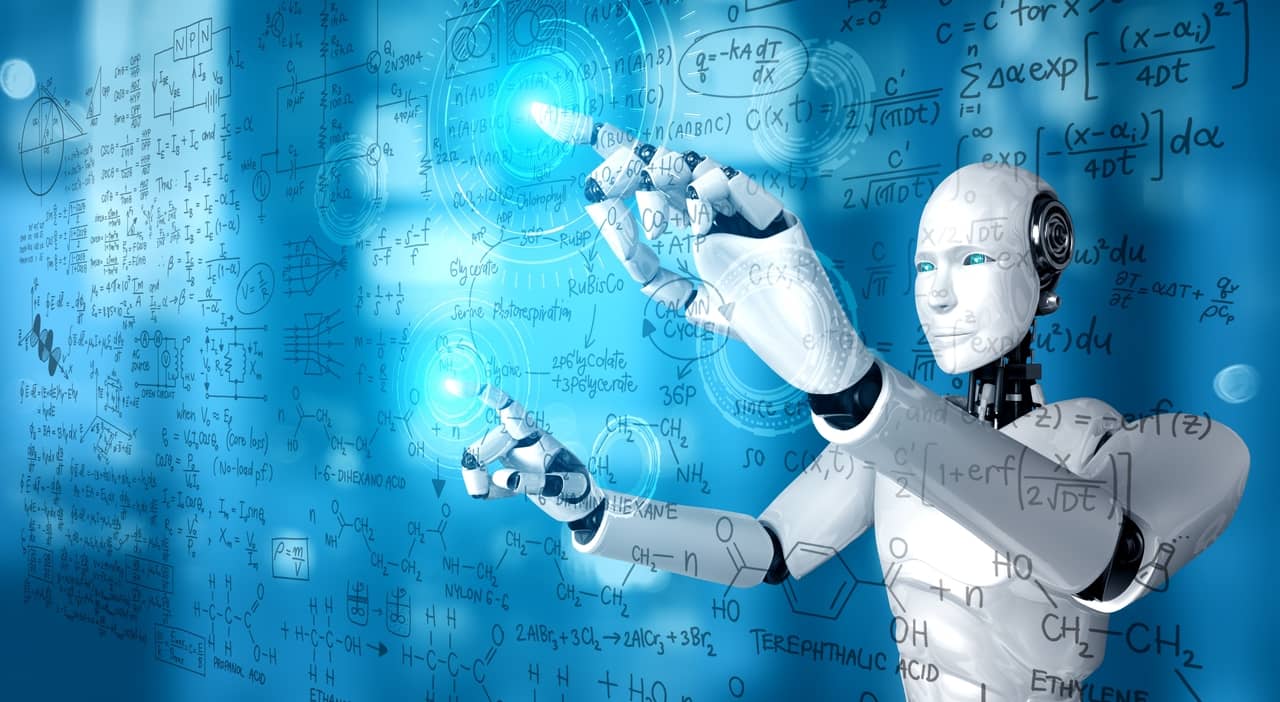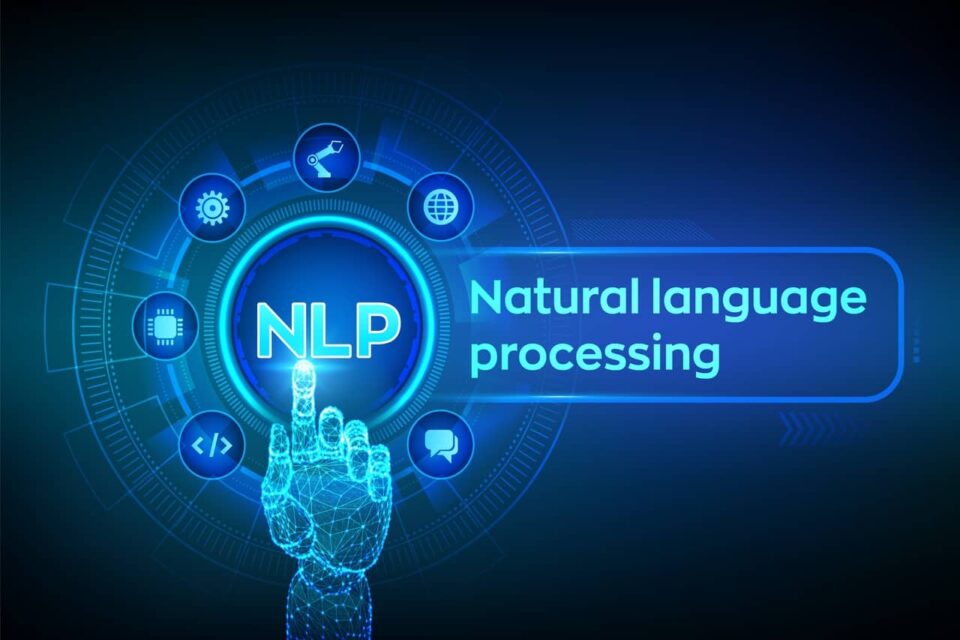Natural Language Processing (NLP) is a subfield of Artificial Intelligence that has the ability of a computer program in helping the computers understand, interpret, and manipulate human language.
Natural language processing has its roots since the 1950s decade, that is, it existed for more than 50 years having roots in the field of linguistics.
It has various real-world applications in some domains, including search engines, research, and business intelligence.
Evolution of NLP
Natural language processing illustrates various disciplines, including computer linguistics and computer science developments since the mid-20th century.
Its evolution took place in the following major milestones:
1950s:
Initiated in this decade, when Alan Turing developed the Turing machine to identify whether the computer is artificially intelligent or not.
This testing involves natural language generation and automated interpretation as intelligence criteria.
1950s-1990s:
Natural language processing worked on rules, that is it used handcrafted rules developed by linguistics to identify how computers would process the human language.
1990s-2000s:
In this decade, natural language processing came with a more statistical approach, as advancements in computer technology made more efficient ways to develop natural language processing technology.
Computers became faster and were used for developing rules-based linguistic statistics.
In this decade, data-driven NLPs became mainstream.
Natural language processing algorithms transferred from a linguist-based approach to an engineer-based approach, it draws on a wider variety of scientific disciplines.
2000-2020s:
In terms of popularity, NLP growth skyrocketed in this decade.
With computing power advancements, NLP gained various real-world applications.
Today, natural language processing approaches involve a combination of statistical methods and classical linguistics.
How Natural Processing Language Works?
NLP has enabled computers to understand natural language as humans do.
Either written or spoken language, natural processing uses artificial intelligence, takes real-world input, interprets it, and makes it applicable that way that computers can understand.

Like humans have different sensors to read and hear, computers have programs and microphones to see and hear.
Humans have brains for processing input, computers possess programs for processing respective inputs.
While processing, it turns input into a code that’s easily understood by the computer.
Natural language processing works on mainly two phases:
- Data Preprocessing
- Algorithm Development
For NLP with Python, we use three tools, i.e., Natural Language Toolkit (NLTK), Gensim, and Intel NLP architect.
- NLTK is an open-source Python module that contains data sets and tutorials.
- Gensim is a python library that is used for indexing documents and topic modelling.
- Intel natural processing language architect for implementation of deep learning techniques and topologies.
For data preprocessing in natural language preprocessing with Python, NLTK is used.
NLTK or Natural Language Toolkit is a package of Python. To analyse, some data will be unstructured and in human-readable text.
To analyse it programmatically, will require preprocessing of data.
Also Read: Technology Revolutions: The advancement for the better world
Data Preprocessing:
It involves preparing and cleaning the text data for machines to analyse.

Preprocessing data puts the data in the workable form and highlights the features in the text where algorithms can work.
Computer performs this process in the following ways:
Tokenization:
In natural language processing with Python, tokenization breaks down the text into smaller units to work with.
It breaks the text into two types, i.e., by word and by sentence.
Removes stop word:
To keep the informative text in process, computer remove the common words from the text.
Common words such as in, is, an, and every so often I and not depend upon the statement.
Lemmatization:
Natural language processing with python process lemmatization that reduces words to their core meaning, but provides a complete English word that makes complete sense on its own.
Stemming:
Reduce the words to their root forms for preprocessing.
Occasionally, there’s also a chance of wrong output mainly in two conditions, i.e., under stemming (false negative) and over stemming (false positive).
Tagging of Parts-of-speech:
Here, it marks the words based on parts-of-speech. (Such as nouns, Verbs, Adjectives, etc.).
To perform NLP with python, it performs code and NLTK uses the word “determiner” to refer to articles if “a” and “the” are included in the category of articles.
Algorithm Development:
After data preprocessing, it develops an algorithm for further processing.

There are various NLP algorithms, but two main types of NLP are:
Rule-based system:
It follows the designed linguistic rules. It used this approach in the 1950s-1990s, i.e., since development, and is still used.
Machine learning-based system:
It uses statistical methods. Here, it learns to perform tasks as per training they fed and adjusts the methods while processing more data.
Through repeated processing and learning, NLP uses the combination of machine learning, neural networks, deep learning, and hone their own rules.
Natural Language Processing Techniques:
There are two main natural language processing techniques. They are:
- Syntax Analysis
- Semantic Analysis
Syntax Analysis:
Syntax arranges the words in a sentence to make grammatical sense.

Natural language processing in artificial intelligence uses syntax to assess meaning from a language as per grammatical rules. Some syntax techniques are:
Parsing:
It analyses the sentence grammatically.
Word Segmentation:
It takes a string of text and derives the word forms from it.
Sentence Breaking:
It arranges the sentence boundaries into large texts.
Morphological Segmentation:
It divides the words into smaller parts.
Stemming:
It divides the words into their root forms.
Semantic Analysis:
Semantic includes the use and meaning of behind words.

Natural language processing in artificial intelligence applies algorithms to understand the structure and meaning of the sentence.
Some semantic natural processing language technique includes:
Word Sense Disambiguation:
It derives the meaning of a word based on context.
Named Entity Recognition:
Determines the text that can be categorized into groups.
Natural Language Generation:
It determines semantics behind words using a database and generates new text.
Use of Natural Processing Language
Some of the main functions that the NLP algorithm includes are:
Text Classification:
It assigns tags to texts to put them into categories. It is helpful in sentiment analysis as it helps the NLP algorithm to determine the emotion behind the text.
Text Extraction:
It automatically summarizes the text and extracts the important piece of data. For example, keyword extraction.
Machine Translation:
In this process, the computer translates the text from one language to another. For example, the work of Google Translator.
Natural Language Generation:
It uses natural language processing algorithms to automatically produce content-based data and analyse unstructured data.
It uses these functions in various real-world applications. Some of them include:
Customer Feedback Analysis: where natural processing language in artificial intelligence analyses social media reviews.
Customer Service Automation: where voice assistants can use speech recognition to know customer’s words, to direct the call correctly.
Automation Translation: It uses tools like Translate Me, Bing Translator, and Google Translator.
Academic research and Analysis: where NLP in artificial intelligence can analyse huge amounts of academic materials and research papers.
Categorization of Medical Records: where artificial intelligence use insights to predict, and ideally prevent the disease.
Word Processors used for Proofreading and Plagiarism Detection: it is done using tools like Grammarly, Hemingway, and Microsoft Word.
Stock Forecasting: it uses artificial intelligence to analyse the market history and documents that include the summaries of the company’s financial statements and performance.
Human Resources Talent Recruitment, and
Routine Litigation Tasks of Automation: It includes the query data sets that are questions asked by the user and the machine interprets important elements to identify human language sentences and perform specific features in the data set, and return output (answer).
Challenges of Natural Processing Language
Since natural language contains an ambiguity that humans can easily identify, computers take some time to understand it.

There are various challenges of NLP and most of them are because of ever-evolving and ambiguous natural language.
Precision:
Computers want to hear the language by humans that is precious, highly structured, and unambiguous.
Meanwhile, human language is not precise, it is sometimes ambiguous, and its linguistic structure relies on complex variables, that includes social context, slang, and regional dialects.
Voice Tone and Inflection:
Natural language processing is not perfect yet, it’s continuously evolving.
Here, natural processing language examples include semantic analysis, that’s a bigger challenge for NLP to perform.
Another challenge is the abstract use of language, as it becomes tricky for programs to understand.
For example, NLP can’t identify sarcasm.
It will need the words to understand as used and what’s their context in a conversation.
Another example, a sentence will change the meaning as per word or syllable as the speaker puts stress upon it.
Natural Language Processing algorithms will miss the subtle.
It can’t identify the change in tone while determining speech recognition.
It becomes difficult for an algorithm to parse when the inflection and tone of the person vary between different accents.
Evolving Language:
NLP has another challenge of the evolving use of language.
There are rules for language that keep evolving and are subjected to change dramatically over time. Hard computational rules will become the characteristics of real-world challenges in the upcoming time.
Final Words
Natural language processing plays an important role in technology and the way humans interact with it.
Today, it is used in many real-world applications in all domains, i.e., business and consumer spheres including search engines, translators, cybersecurity, chatbots, and big data analytics.
As soon as these challenges get resolved and NLP with python can easily implement complex problems, NLP will continue to play a vital role in the commercial industry and everyday life.
Further Reading:




